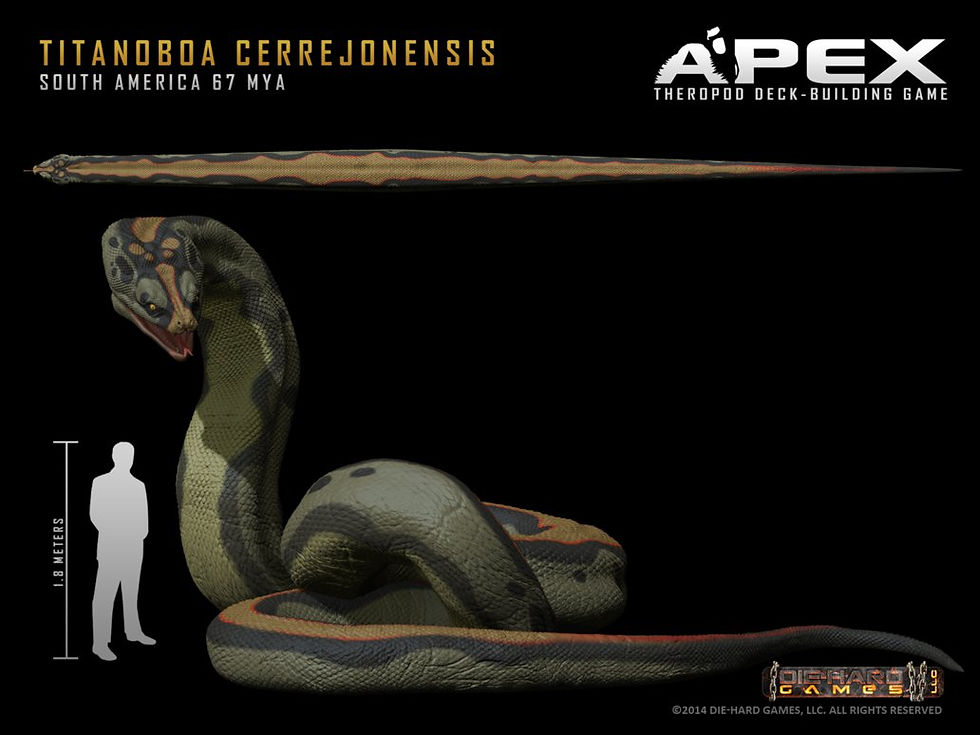
CREATURE-PEDIA
Titanoboa




Titanoboa (meaning "titanic boa"), is an extinct genus of snakes that lived about 60–58 million years ago, during the Paleocene epoch, a 10-million-year period immediately following the dinosaur extinction event. The only known species is Titanoboa cerrejonensis, the largest, longest, and heaviest snake ever discovered, which supplanted the previous record holder, Gigantophis. At 2 ½ feet across, Titanoboa would struggle to fit through your front door, weighing in at over a ton, it would be 4x heavier than the largest snake alive today and at 45 feet long, it would be as long as an american school bus. You might assume that the "titanic boa" hunted like a modern-day boa constrictor, wrapping itself around its prey's torso and squeezing tight until its victim suffocated. In fact, though, Titanoboa attacked its prey in more dramatic fashion, probably slithering close to its lunch while half-submerged in the water, and then, with a sudden leap, snapping its massive jaws onto its unfortunate victim's windpipe. How the mighty have fallen. Until recently, the 33-foot-long, thousand-pound Gigantophis was hailed as the king of all snakes, until its reputation was eclipsed by a reptile that predated it by a whopping 40 million years. Not that Gigantophis was exactly a pussycat compared to Titanoboa; for instance, paleontologists believe this African snake made a regular meal of the distant elephant ancestor Moeritherium. South America recovered fairly quickly from the plunging global temperatures in the wake of the Yucatan meteor impact 65 million years ago, which threw up clouds of dust that obscured the sun. During the Paleocene epoch, modern-day Peru and Colombia were positively tropical, with high humidity and average temperatures in the 90s--and cold-blooded reptiles like Titanoboa grow to much bigger sizes in warmer climates! Unlike the case with some contemporary snakes, brightly colored markings would have been of no use to Titanoboa, which made its living by sneaking up on prey. In fact, all of the plus-sized reptiles in Titanoboa's habitat were unremarkable to look at and even harder to see. In March of 2012, the Smithsonian Institution installed a 48-foot-long Titanoboa in Grand Central Station, New York's busiest commuter rail terminal, during evening rush hour. As a museum spokesman was quoted by The Huffington Post, the exhibit was meant to "scare the hell out of people"--and, not coincidentally, also to call their attention to an upcoming Smithsonian TV special, "Titanoboa: Monster Snake."
Fun Fact
Just like the Anaconda, Titanoboa lived in swamps of South America.
Fun Fact
At 40 feet long, this gigantic snake preyed on large turtles and crocodiles.

